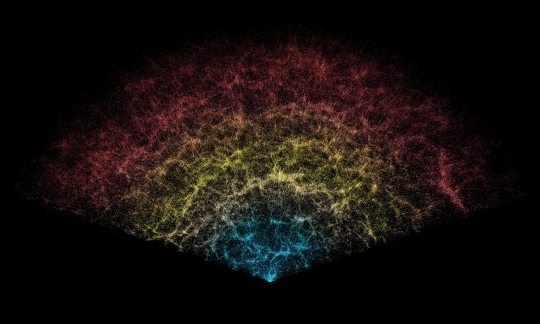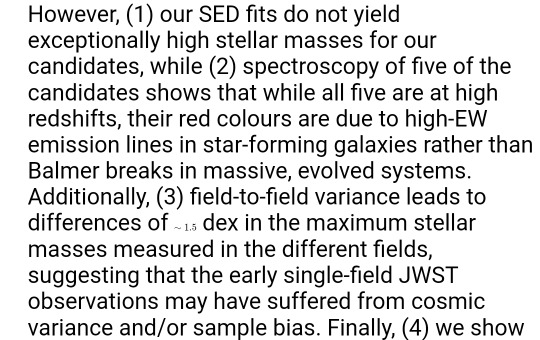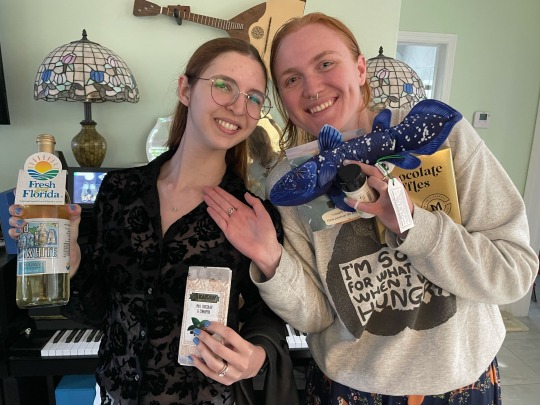#spectroscop
Explore tagged Tumblr posts
Text

"This stunning new mosaic of images from the NASA/ESA/CSA James Webb Space Telescope showcases the nearby star-forming cluster, NGC 1333."
"These data constitute the first deep spectroscopic survey of the young cluster, and have identified brown dwarfs down to planetary masses using the observatory’s Near-Infrared Imager and Slitless Spectrograph (NIRISS). The first results from this survey have been accepted for publication in the Astronomical Journal."
source
#cosmos#universe#space#astronomy#esa#james webb space telescope#james webb telescope#stars#planets#nebula#technology#science#infrared#visible spectrum#color spectrum#spectrograph#spectroscope
61 notes
·
View notes
Note






Wanted to share some bird photos I’ve taken in and around my neighborhood in Miami! Many of my neighbors keep chickens and I love seeing the more uncommon kinds of chicken.
Peacocks just kinda run rampant here. Some people feed them but I don’t think they belong to anyone.
As for the birds near the lake, I actually don’t know what kind they are, but I love to see them
Oh I LOVE fluffy chickens! And peacocks are always such a beautiful sight :)
The birds by the lake are white ibises and a wood stork! Beautiful birds!
24 notes
·
View notes
Text

DESI Map !
A slice of the 3D map of galaxies collected in the first year of the Dark Energy Spectroscopic Instrument (DESI) Survey. Earth is at the tip, with the furthest galaxies plotted at distances of 11 billion light-years. Each point represents one galaxy.
This version of the DESI map includes 600,000 galaxies — less than 0.1% of the survey's full volume.
Credit: DESI Collaboration/NOIRLab/NSF/AURA/R. Proctor
#art#cosmos#cosmic#universe#blast#space#wallpaper#desi map#3D map#galaxies#galaxy#dark energy spectroscopic instrument#survey#NOIRlab
23 notes
·
View notes
Text
Full article at https://www.space.com/the-universe/dark-energy-is-even-stranger-than-we-thought-new-3d-map-of-the-universe-suggests-what-a-time-to-be-alive-video
3 notes
·
View notes
Text

@spectroscopic-binary smc+jeh5eva 💞✨😻
3 notes
·
View notes
Note
Thinking about dnf and binary stars again first thing in the morning now, and I’m just

Remembering how they just kept walking around and following each other constantly during their song
THEY ORBIT AROUND EACH OTHER THEY MASS CENTERS ARE CONNECTED THEY ARE EQUILIBRIUM THEY EVOLVED TOGETHER (SOMETHING ABOUT ROOTS HERE) SO CLOSE THAT THE LINES BLUR
#They would be spectroscopic binaries#its barely 12 and a half for me GOF I HAVENT FINISHED MY ESSYAYSHDDFSDPF#star asks#you always get it oceanito
40 notes
·
View notes
Text

fille_delespace explains the latest results from DESI (Dark Energy Spectroscopic Instrument). I’m not sure I understand it all but I love her enthusiasm.
instagram
14 notes
·
View notes
Note
Your new pfp is so cute!
ty!!! my friend @cavitycove drew it, you should go check out her art!! she's INCREDIBLE talented
4 notes
·
View notes
Text
The biggest ever 3D map of the universe, featuring more than 6m galaxies, has been revealed by scientists who said it raised questions about the nature of dark energy and the future of the universe.
The map is based on data collected by the Dark Energy Spectroscopic Instrument (Desi) in Arizona and contains three times as many galaxies as previous efforts, with many having their distances measured for the first time.
Researchers said that by using this map, they have been able measure how fast the universe has been expanding at different times in the past with unprecedented accuracy.
The results confirm that the expansion of the universe is speeding up, they added. However, the findings have also raised the tantalising possibility that dark energy – a mysterious, repulsive force that drives the process – is not constant throughout time as has previously been suggested.
Dr Seshadri Nadathur, a co-author of the work and senior research fellow at the University of Portsmouth’s Institute of Cosmology and Gravitation, said: “What we are seeing are some hints that it has actually been changing over time, which is quite exciting because it is not what the standard model of a cosmological constant dark energy would look like.”
Prof Carlos Frenk, from Durham University and a co-author of the research, said that if dark energy was indeed constant in time, the future of the universe was simple: it would expand on and on, for ever. But if the hints found in the map stood up, that would be called into question.
“Now all of that goes out the window and essentially we have to start from scratch, and that means revising our understanding of basic physics, our understanding of the big bang itself, and our understanding of the long-range forecast for the universe,” he said, adding that the new hints left open the possibility that the universe might undergo a “big crunch”.
The research, which has been published in a series of preprints – meaning it has yet to be peer-reviewed – reveals how the team first created the 3D map, then measured patterns in the distribution of galaxies that relate to sound waves that occurred in the early universe, known as baryon acoustic oscillations.
As the size of these patterns is known to be regular, the team was able to calibrate the distances to different galaxies in the map, allowing them to work out how fast the universe has been growing over the last 11bn years, with a precision better than 0.5% over all times, and better than 1% between 8bn and 11bn years ago.
Frenk said the precision itself of the measurements was notable given that galaxies could be billions of light years away, and billions of years old. “It’s mind-boggling that we can measure anything to a precision of 1%, which is precision you get in the laboratory in physics for high-precision measurements,” he said.
Andrew Pontzen, professor of cosmology at University College London and author of the book The Universe in a Box, who was not involved in the work, said Desi was one of a slew of exciting new astronomical surveys cataloguing the night sky, with one of the primary goals being to measure the rate at which our expanding universe has speeded up.
“Like measuring the acceleration of a car, charting the universe’s expansion tells us about the ‘engine’ powering cosmic acceleration. That engine is known as dark energy,” he said.
However, Pontzen noted that our knowledge of how dark energy operates was limited. “The new data, when combined with existing measurements, would seem to contradict the simplest possible explanations for dark energy,” he said.
“At face value, that’s an exciting step forward. But as the team themselves caution, there is a huge amount still to understand about this data and early results should be taken with a healthy grain of salt.”
7 notes
·
View notes
Text


real neri sklogw fans will remember that i said this would happen months ago
#astro-ph#i literally said that spectroscopic stellar mass measurements would show that the initial estimates were waaay overestimated
7 notes
·
View notes
Note
For your hypothetical moral questions.
For A, I would take the knife of the other dude if they’re not awake yet. Thus they can’t escape. If they are awake, I will tell them that I’m going to get help because I am already unbound and ask to take their knife with me. The puzzle description never says that they know the rules of the puzzle. If they refuse to give up the knife, I explain the puzzle and say that I have a plan that will get them out later. If they still don’t like me at this point they’ve probably already cut themselves free, stabbed me and escaped.
For B, It depends on two factors:
1. Is the person from earth/familiar with international signs/gestures?
2. Is the memo that explains the rules on a physical piece of paper or thing I can point to?
If they are from earth and I can hold or point to the memo, I would point to my memo, and then point to theirs. I would repeat several times to make the point that we have the same memo. Then, I would make a peace sign with my hand while dropping the knife. The peace sign would signify no violence from my end. Hopefully they are smart enough to do the same, and we go free.
If they are not from earth but there is a physical piece of paper, I would point to their paper and then mine so that they get that they say the same thing. Then I will flop over pathetically and throw away the knife to signify a lack of aggression. If they toss their knife too, we go free.
If they know the peace sign and there is no physical memo, I would point to me, do the peace sign, point to them, do the peace sign, repeat as I slowly put the knife down and kick it away. I repeat until I peer pressure them into mimicking me. Freedom.
If they don’t know earth culture, and there is no physical memo, I would slowly set down the knife, kick it away, and then sit down as casually as possible. Slow blink at ‘em like a cat. Hopefully they get the idea?
I love these answers, thank you so much! I think you're the first person to make the same choices as the character in the fic <3
4 notes
·
View notes
Text
Stunning ultra-detailed picture of Sculptor galaxy unveiled by ESO | - The Times of India
Astronomers at the European Southern Observatory (ESO) have unveiled the most stunning and ultra-detailed map ever created of the Sculptor galaxy, also known as NGC 253. Located about 11 million light years away, this galaxy shares many similarities with our own Milky Way in terms of size and structure. Using the powerful Multi Unit Spectroscopic Explorer (MUSE) instrument on ESO’s Very Large…
#European Southern Observatory#Multi Unit Spectroscopic Explorer#NGC 253#Sculptor galaxy#ultra-detailed map#Very Large Telescope
0 notes
Text
A new data release from the Dark Energy Spectroscopic Instrument contains information on 18.7 million galaxies, quasars, and stars — the largest dataset of its kind ever shared
#Dark Energy Spectroscopic Instrument#downthetubes News#Kitt Peak National Observatory#Lawrence Berkeley National Laboratory#Science and Technology Facilities Council#Space News
1 note
·
View note
Text

LOVE IS REAL. gifts. Gifts are also real. But not as important as LOVE.
Happy chanuqa!!! @spectroscopic-binary
4 notes
·
View notes
Note
Uwahhh, that's so cool!!!!! I love chemistry, and just science in general lol, but I don't tend to retain a lot of information I learn about it lmao
I personally really love astronomy and just stuff relating to space, I'm a huge space nerd ueuhehehe
If you ever wanna rant abt chemistry stuff I will listen,,, /nf
-Iruma!! :D
Oh fun fact!!! It's international(?) cat day!! Or at least, it's cat day in Japan, idk if it's actually international or not lol
chemistry is ERRYTHANG ta me i love analytics an i love that everything in tha world is made up a so many different lil tiny thangs- an i love love love witnessin chemical reactions! but i totally get liking astronomy too! my headmate hanakos way inta that kinna stuff- i aint met him but i heard hes a hes a nice kid?? i personally wanna get matter from another planet an analyze it, tha idea a gettin my hands on somethin otherworldly an seein errythang that makes it what it is is so enticin!!
CAT DAY!? HELL YEAH i have TWO cats actually, their names are jekyll and hyde!


they deserve erry lil head kiss tha world has ta offer- jekylls tha lil patchy one an hydes the larger black cat!
#asks#kirio speaks!!#my posts#RAHH LOOK AT MY KIDS#aint they tha cutest ever??#but yes i wanna analyze tha properties of matter previously unseen#but juss bein in a lab ta begin with makes me so pumped!#i think one a my favorite machines is tha raman spectroscope its sooooo cool an has such complex workings#i wish i had more experience with it
1 note
·
View note
Text
Discovering Black Holes: A Milestone Achieved by Indian-Origin Astrophysicist
Discovering Black Holes: A Milestone Achieved by Indian-Origin Astrophysicist @neosciencehub #BlackHoles #IndianAstrophysicist #RagaDeepika #DwarfGalaxies #neosciencehub
In a remarkable advancement for astrophysics, a research team led by Indian-origin astrophysicist Raga Deepika Pucha has unveiled groundbreaking findings about black holes and dwarf galaxies. Based in the United States, this team has identified the largest samples of intermediate-mass black holes and dwarf galaxies harbouring actively feeding black holes, thereby opening new avenues for…
#Astrophysicist#Black Holes#Dark Energy Spectroscopic Instrument (DESI)#dwarf galaxies#featured#sciencenews
0 notes